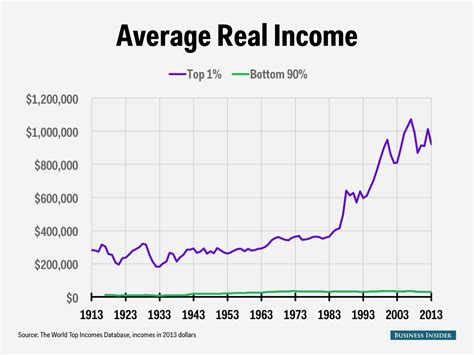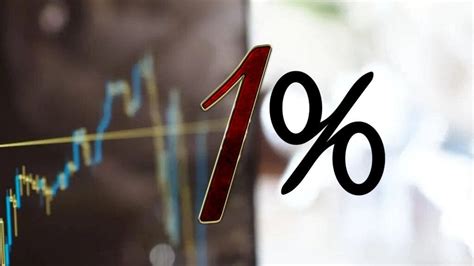
Cincinnati-based Procter & Gamble (PG) has increased its dividend payout for the 68th consecutive year, marking its 131st straight year of paying dividends, an achievement unparalleled in the stock market and solidifying its status as a Dividend King.
Procter & Gamble, a consumer staples giant, announced a 7% increase in its quarterly dividend, raising it from $0.9407 to $1.0065 per share. This latest boost underscores the company’s consistent commitment to returning value to its shareholders. The increased dividend will be payable on or after May 15, 2024, to shareholders of record as of April 19, 2024. This announcement has been met with enthusiasm by investors seeking reliable income streams, especially in an uncertain economic environment.
A Legacy of Dividends
Procter & Gamble’s remarkable dividend history reflects its financial stability and enduring business model. Few companies can boast such a long and consistent track record of dividend increases. The company’s ability to consistently raise its dividend through various economic cycles speaks volumes about the strength of its brands and its prudent financial management.
“P&G’s continued dividend increases demonstrate the Company’s commitment to returning cash to shareowners,” said Andre Schulten, Chief Financial Officer, during the announcement. This commitment is a cornerstone of P&G’s appeal to long-term investors.
The company’s dividend track record places it in an elite group known as Dividend Kings, companies that have increased their dividend payouts for at least 50 consecutive years. Even among this group, P&G stands out due to the sheer length of its streak. This performance is a testament to the company’s dominant market position and its capacity to generate consistent profits.
Financial Performance and Stability
P&G’s ability to maintain and increase its dividend is rooted in its strong financial performance. The company boasts a diverse portfolio of well-known brands, including Pampers, Tide, Gillette, and Crest, which generate consistent revenue streams. These brands are staples in households worldwide, giving P&G a competitive advantage and a level of demand that is relatively resistant to economic downturns.
In its most recent earnings report, P&G demonstrated resilient performance despite inflationary pressures and supply chain challenges. The company has successfully managed costs and maintained its profit margins through a combination of pricing strategies and operational efficiencies. This financial discipline has enabled P&G to continue investing in its business and rewarding its shareholders with growing dividends.
The dividend payout ratio, which measures the percentage of earnings paid out as dividends, is an important metric for assessing the sustainability of a company’s dividend policy. While P&G has a relatively high payout ratio, its strong cash flow generation and stable earnings provide a solid foundation for its dividend commitments. Analysts often monitor this ratio to ensure that the company can continue to afford its dividend payments without jeopardizing its financial health.
Investor Confidence and Market Impact
P&G’s dividend announcement has a positive impact on investor confidence. The stock is often seen as a safe haven during market volatility, attracting investors who prioritize stability and income. The dividend increase signals the company’s confidence in its future prospects and reinforces its appeal to both retail and institutional investors.
The market’s reaction to the dividend announcement is typically positive, with the stock price often experiencing a modest increase. This reflects the market’s recognition of P&G’s financial strength and its commitment to returning value to shareholders. In addition to the direct benefit of the dividend income, investors also appreciate the potential for capital appreciation as the stock price responds to positive news.
Furthermore, P&G’s dividend policy has a ripple effect on the broader market. Other companies in the consumer staples sector may feel pressure to maintain or increase their own dividends to remain competitive. This creates a positive feedback loop that benefits income-seeking investors across the market.
Strategies for Dividend Growth
P&G employs several strategies to support its dividend growth. These include:
- Brand Innovation: P&G invests heavily in research and development to create new and improved products that meet evolving consumer needs. This innovation drives sales growth and strengthens the company’s brand portfolio.
- Operational Efficiency: P&G continuously seeks to improve its operational efficiency by streamlining its supply chain, reducing costs, and optimizing its manufacturing processes. These efforts enhance the company’s profitability and free up cash for dividends.
- Strategic Acquisitions and Divestitures: P&G actively manages its portfolio of brands, acquiring businesses that complement its existing operations and divesting those that no longer align with its strategic priorities. These transactions can generate significant value for shareholders.
- Global Expansion: P&G continues to expand its presence in emerging markets, where consumer demand is growing rapidly. This global expansion provides new avenues for growth and diversification.
- Price Optimization: P&G leverages its strong brand reputation to implement pricing strategies that maintain its profit margins while remaining competitive in the market. This ability to command premium prices is a key advantage.
Risks and Challenges
Despite its impressive track record, P&G faces several risks and challenges that could potentially impact its future dividend growth. These include:
- Competitive Pressures: P&G operates in a highly competitive industry, with numerous players vying for market share. Increased competition could erode the company’s profit margins and limit its ability to raise prices.
- Changing Consumer Preferences: Consumer preferences are constantly evolving, and P&G must adapt to these changes to remain relevant. Failure to innovate and meet consumer needs could lead to declining sales and profits.
- Economic Downturns: Economic downturns can negatively impact consumer spending, particularly on discretionary items. While P&G’s products are considered staples, demand can still decline during periods of economic weakness.
- Currency Fluctuations: As a multinational company, P&G is exposed to currency fluctuations that can impact its financial results. A strong dollar, for example, can reduce the value of its overseas earnings.
- Supply Chain Disruptions: Global supply chain disruptions, such as those experienced during the COVID-19 pandemic, can disrupt P&G’s operations and increase its costs. These disruptions can negatively impact the company’s profitability.
- Inflationary Pressures: Rising inflation can increase P&G’s input costs, such as raw materials and labor. The company must manage these cost pressures effectively to maintain its profit margins.
- Regulatory Changes: Changes in regulations, such as environmental regulations or tax laws, can impact P&G’s operations and financial performance. The company must comply with these regulations, which can be costly and time-consuming.
The Appeal to Income Investors
For income investors, P&G represents a cornerstone investment. The company’s commitment to consistently raising its dividend makes it an attractive option for those seeking a reliable and growing income stream. The stock’s stability and defensive characteristics also provide a measure of protection during market downturns.
Dividend investing is a strategy that focuses on generating income from dividends rather than relying solely on capital appreciation. This approach is particularly appealing to retirees and others who need a steady stream of income to meet their living expenses. P&G’s dividend track record makes it a popular choice among dividend investors.
However, it’s important to note that dividend investing is not without risk. Companies can reduce or suspend their dividends if they experience financial difficulties. Therefore, it’s crucial to carefully evaluate a company’s financial health and its ability to sustain its dividend payments before investing.
Alternatives in the Dividend King Universe
While P&G is a standout Dividend King, other companies also boast impressive dividend track records. Some notable alternatives include:
- 3M Company (MMM): A diversified industrial company with a long history of dividend increases. However, it has faced recent challenges.
- Johnson & Johnson (JNJ): A healthcare giant known for its stable earnings and consistent dividend growth.
- Coca-Cola (KO): A beverage company with a global brand and a strong commitment to its dividend.
- Colgate-Palmolive (CL): A consumer products company with a focus on oral care and personal care products.
- Lowe’s Companies (LOW): A home improvement retailer that has benefited from the housing market boom.
Each of these companies has its own unique strengths and weaknesses. Investors should carefully consider their investment objectives and risk tolerance before making any decisions. Diversification is key to managing risk in a dividend portfolio.
Future Outlook
Looking ahead, P&G is well-positioned to continue its dividend growth streak. The company’s strong brand portfolio, its focus on innovation, and its commitment to operational efficiency provide a solid foundation for future success. However, P&G must also navigate the challenges posed by competitive pressures, changing consumer preferences, and economic uncertainty.
The company’s management team has a proven track record of delivering results. They are committed to creating long-term value for shareholders, which includes maintaining and growing the dividend. This commitment is reflected in the company’s strategic priorities and its capital allocation decisions.
Analysts generally have a positive outlook on P&G’s future prospects. They expect the company to continue to generate solid earnings growth and to maintain its dividend payout ratio. However, they also caution that P&G’s stock price may be fully valued, which could limit its potential for capital appreciation.
Conclusion
Procter & Gamble’s 131-year history of paying dividends, including 68 consecutive years of increases, is a remarkable achievement that underscores the company’s financial strength and its commitment to returning value to shareholders. While challenges exist, P&G’s strong brand portfolio, its focus on innovation, and its disciplined financial management position it well for continued success in the years ahead. For income investors seeking a reliable and growing income stream, P&G remains a compelling option. The company’s dividend track record is a testament to its enduring business model and its ability to navigate various economic cycles. As the company continues to adapt to changing consumer preferences and invest in its future, it is likely to remain a cornerstone investment in many dividend portfolios. However, prospective investors must consider all potential risks and rewards before investing.
Frequently Asked Questions (FAQ)
1. What is a Dividend King, and why is Procter & Gamble considered one?
A Dividend King is a company that has increased its dividend payout for at least 50 consecutive years. Procter & Gamble is considered a Dividend King because it has increased its dividend for 68 consecutive years. This places it among an elite group of companies known for their consistent commitment to returning value to shareholders through dividend increases. The “Dividend King” status indicates a long history of financial stability and a commitment to rewarding investors, even during challenging economic times.
2. How much is Procter & Gamble’s new dividend payout, and when will it be paid?
Procter & Gamble’s new quarterly dividend payout is $1.0065 per share, an increase of 7% from the previous dividend of $0.9407 per share. The increased dividend will be payable on or after May 15, 2024, to shareholders of record as of April 19, 2024. This means that to receive the dividend, investors must have owned the stock before the ex-dividend date, which is typically one business day before the record date.
3. What factors have contributed to Procter & Gamble’s ability to consistently increase its dividend over such a long period?
Several factors have contributed to P&G’s consistent dividend growth. These include:
- Strong Brand Portfolio: P&G has a diverse portfolio of well-known brands, such as Pampers, Tide, Gillette, and Crest, which generate consistent revenue streams.
- Financial Discipline: P&G has a history of prudent financial management and cost control, which has enabled it to maintain its profit margins and generate strong cash flow.
- Innovation: P&G invests heavily in research and development to create new and improved products that meet evolving consumer needs.
- Global Presence: P&G has a global presence, which allows it to diversify its revenue streams and reduce its reliance on any single market.
- Commitment to Shareholders: P&G’s management team is committed to returning value to shareholders through dividend increases and share repurchases.
4. What are some of the risks and challenges that Procter & Gamble faces that could potentially impact its future dividend growth?
Despite its impressive track record, P&G faces several risks and challenges, including:
- Competitive Pressures: P&G operates in a highly competitive industry, with numerous players vying for market share.
- Changing Consumer Preferences: Consumer preferences are constantly evolving, and P&G must adapt to these changes to remain relevant.
- Economic Downturns: Economic downturns can negatively impact consumer spending, particularly on discretionary items.
- Currency Fluctuations: As a multinational company, P&G is exposed to currency fluctuations that can impact its financial results.
- Supply Chain Disruptions: Global supply chain disruptions can disrupt P&G’s operations and increase its costs.
- Inflationary Pressures: Rising inflation can increase P&G’s input costs, such as raw materials and labor.
5. How does Procter & Gamble’s dividend yield compare to other companies in the consumer staples sector and the broader market?
As of the time of the news release, it is important to check current yields, but Generally, P&G’s dividend yield is often competitive within the consumer staples sector and typically higher than the average dividend yield of the S&P 500. The dividend yield is calculated by dividing the annual dividend per share by the stock price. While a higher dividend yield can be attractive to income investors, it’s important to consider other factors, such as the company’s financial health and its ability to sustain its dividend payments. Investors should compare P&G’s dividend yield to those of its peers and to the broader market to determine if it is an attractive investment opportunity. Dividend yield is a fluctuating number based on stock price.









